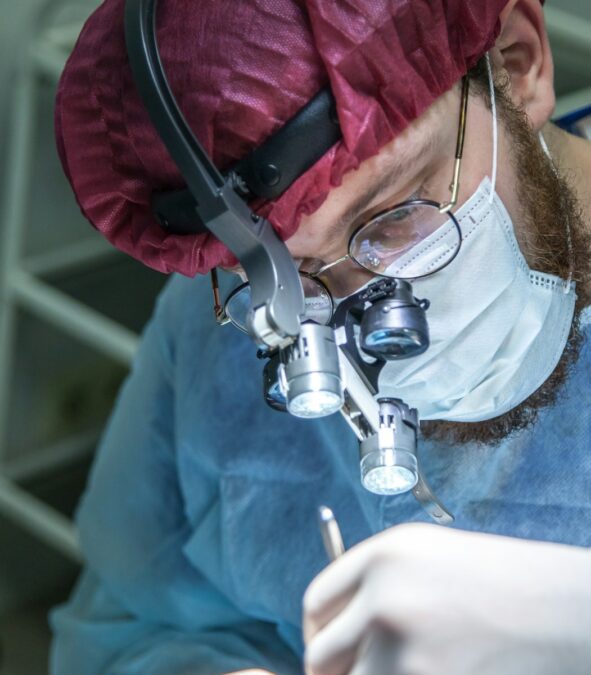Elevating Healthcare: The Impact of Robotic-Assisted Surgery
Revolutionizing Surgical Procedures
In the realm of modern healthcare, robotic-assisted surgery is ushering in a new era of precision and efficiency. This innovative approach combines the expertise of skilled surgeons with the precision and dexterity of robotic technology, leading to improved patient outcomes and recovery times. Across Saudi Arabia and the UAE, hospitals are embracing robotic-assisted surgery as a cornerstone of their surgical programs, enhancing the quality of care for patients.
Enhanced Precision and Accuracy
One of the primary benefits of robotic-assisted surgery is its ability to deliver enhanced precision and accuracy during procedures. Robotic systems offer surgeons greater control and range of motion, allowing for more precise movements in delicate areas of the body. This precision reduces the risk of complications and minimizes trauma to surrounding tissues, leading to faster recovery times and better long-term outcomes for patients.
Minimally Invasive Approach
Robotic-assisted surgery typically involves smaller incisions than traditional open surgery, resulting in less pain, scarring, and blood loss for patients. By utilizing miniaturized instruments and a magnified 3D camera system, surgeons can perform complex procedures with greater accuracy and control through keyhole incisions. This minimally invasive approach offers numerous benefits, including shorter hospital stays, reduced risk of infection, and quicker return to normal activities.
Optimizing Surgical Workflows and Patient Care
Beyond the operating room, robotic-assisted surgery has a profound impact on surgical workflows and overall patient care. Healthcare organizations are investing in robotic systems to streamline surgical processes, improve efficiency, and enhance the patient experience. From preoperative planning to postoperative recovery, robotic-assisted surgery offers a comprehensive solution for delivering high-quality care.
Streamlined Preoperative Planning
Robotic-assisted surgery facilitates detailed preoperative planning through advanced imaging and simulation tools. Surgeons can visualize the surgical site in 3D, assess anatomical structures, and develop personalized treatment plans for each patient. This comprehensive approach ensures optimal surgical outcomes while minimizing the risk of complications. Additionally, robotic systems allow for intraoperative adjustments based on real-time feedback, further enhancing surgical precision and patient safety.
Personalized Postoperative Care
Following surgery, robotic-assisted systems support personalized postoperative care and rehabilitation programs. By tracking patient progress and outcomes, healthcare providers can tailor rehabilitation plans to individual needs, maximizing recovery potential. This personalized approach improves patient satisfaction and long-term functional outcomes, ultimately leading to better overall quality of life.
Empowering Surgeons and Improving Healthcare Delivery
Robotic-assisted surgery empowers surgeons with advanced tools and technologies, enabling them to perform complex procedures with greater confidence and precision. As healthcare organizations continue to invest in robotic systems, the landscape of surgical care is rapidly evolving. By embracing innovation and leveraging the latest advancements in robotic technology, hospitals in Saudi Arabia and the UAE are setting new standards for excellence in patient care.
Expanding Access to Robotic-Assisted Surgery
While robotic-assisted surgery offers significant advantages, ensuring equitable access to this technology remains a priority. Healthcare organizations must address barriers such as cost, infrastructure, and training to extend the benefits of robotic surgery to all patients. By investing in education and infrastructure development, hospitals can expand access to robotic-assisted surgery and promote health equity across diverse populations.
Embracing Continuous Innovation
Furthermore, continuous innovation is essential for advancing robotic-assisted surgery and maximizing its potential. Research and development efforts should focus on enhancing robotic capabilities, expanding the range of procedures, and improving user interfaces. By fostering collaboration between clinicians, engineers, and researchers, the healthcare industry can drive innovation and unlock new possibilities for robotic-assisted surgery.
Conclusion
In conclusion, robotic-assisted surgery represents a transformative advancement in healthcare, offering numerous benefits for both patients and providers. By combining human expertise with robotic precision, this innovative approach is revolutionizing surgical procedures and improving patient outcomes. As the adoption of robotic-assisted surgery continues to grow, it will play an increasingly integral role in shaping the future of healthcare delivery.
#RoboticSurgery #HealthcareInnovation #PatientOutcomes #SurgicalTechnology #SaudiArabia #UAE #HealthcareQuality #MinimallyInvasiveSurgery #PrecisionMedicine #HealthcareDelivery #MedicalTechnology #FutureOfSurgery

